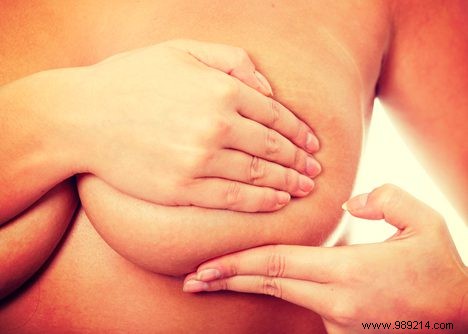
By doing regular breast self-exams, you increase the chance that you will notice changes in your breast quickly. It is important to be there on time if the diagnosis turns out to be breast cancer. These are a few points you can pay attention to during breast examination.
1. Know what is normal
In order to detect changes, it is important that you know how your breasts 'normally' feel. Your breasts change throughout your life. It is therefore useful to examine your breasts on a regular basis. You know how your breasts feel and will recognize changes faster.
2. What do your breasts look like?
Are there any changes in the size, shape or skin of your breasts? Also pay attention to your nipples.
3. How do your breasts feel?
Make sure your pectoral muscle is relaxed. Place your right hand behind your head and examine your right breast with your left hand (and vice versa of course). Examine your breasts with twisting and stroking movements, using light pressure first and then a little more pressure. You can divide your breasts into quarters in your mind so that you don't miss a single piece. Check for swelling in your armpits. You can do the breast examination lying down and/or standing. Do you have big breasts? Then lying breast examination is often easier.
4. What changes can I discover?
There are several changes you might discover during a breast exam:a lump or disc in your breast, a dimple in your breast, a poorly healing wound, swelling in your armpit, a change in your skin, your nipple that has has been withdrawn for a short time, a sore or a place that feels warm to the touch. Without further research you can never really know whether a lump is harmless or not.
Read also: A lump in your breast:harmless or not?